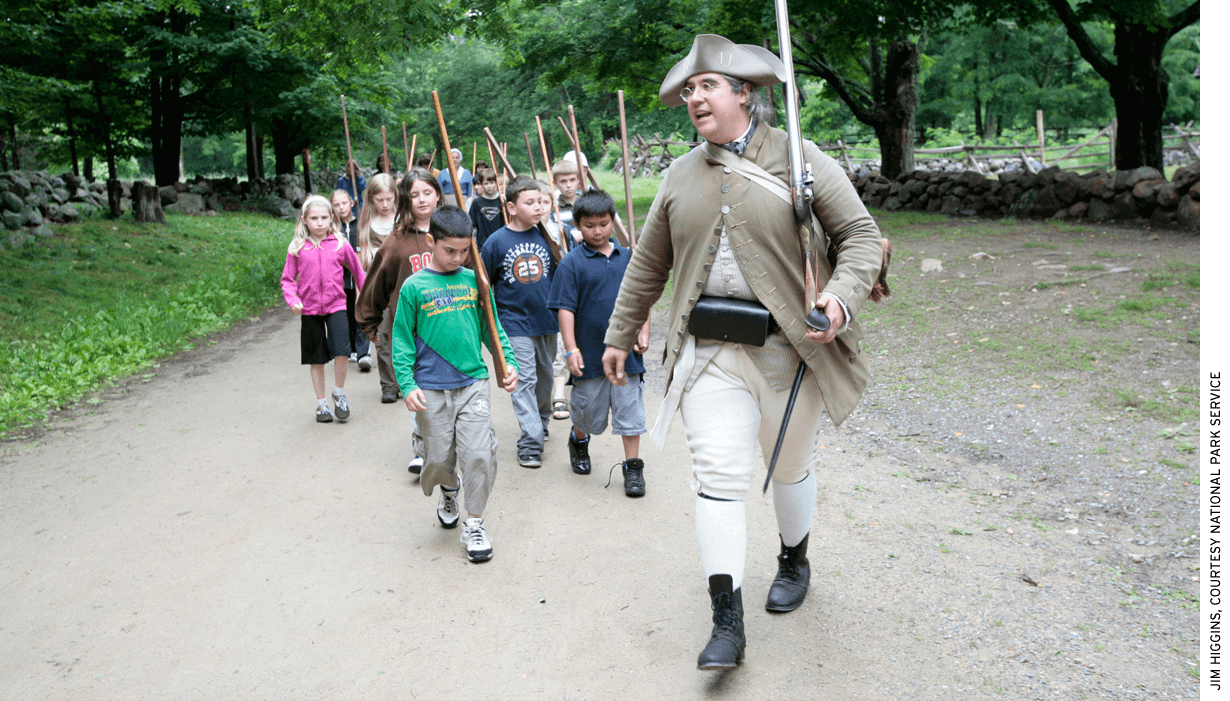
When my mother passed away at the ripe old age of 90, several years ago, my brothers and I had the bittersweet task of emptying out the home she and my father had lived in for well over half a century, and where we grew up. We took various keepsakes and mementoes. I made a beeline for the books and magazines. While leafing through, I realized how much my picture of America had been formed by them and the tempered but patriotic history they conveyed. They reflected the middlebrow culture of mid-twentieth century America, which carried many of my generation through the turmoil of social change, war, and political crisis. And they reminded me of the need for robust history and civic education today.
The first collection of books I recovered was from when I was quite young. It was the Landmark series of histories for young people, conceived by Bennett Cerf of Random House and launched in 1948 with books by topnotch novelists like Dorothy Canfield Fisher, C. S. Forester, and Robert Penn Warren, and war correspondents like William L. Shirer, Quentin Reynolds, and Richard Tregaskis. It eventually ran to some 180 volumes and covered not just American history but everything from the pharaohs of ancient Egypt to the United Nations in war and peace. Although mainly out of print, they retain some appeal to homeschooling parents and are easy to find in used bookstores.
Next I found my old copy of Kenneth Roberts’ historical novel about the American retreat from Canada in 1776 and the Saratoga campaign of 1777, Rabble in Arms. In it, Roberts turned my 12-year-old historical consciousness upside down by making Benedict Arnold out to be a hero, by showing how Arnold’s military skill accounted for the deferral of one British invasion of the northern United States and the defeat of another. Roberts described in terms more vivid than all but the best historians what it was like to fight a lake battle in upstate New York in late autumn, be inoculated against smallpox, and deal with the stupidities of legislative politics. Like his contemporaries Walter Edmonds (Drums Along the Mohawk) and Esther Forbes (Johnny Tremain), he made the colonial and revolutionary past live.
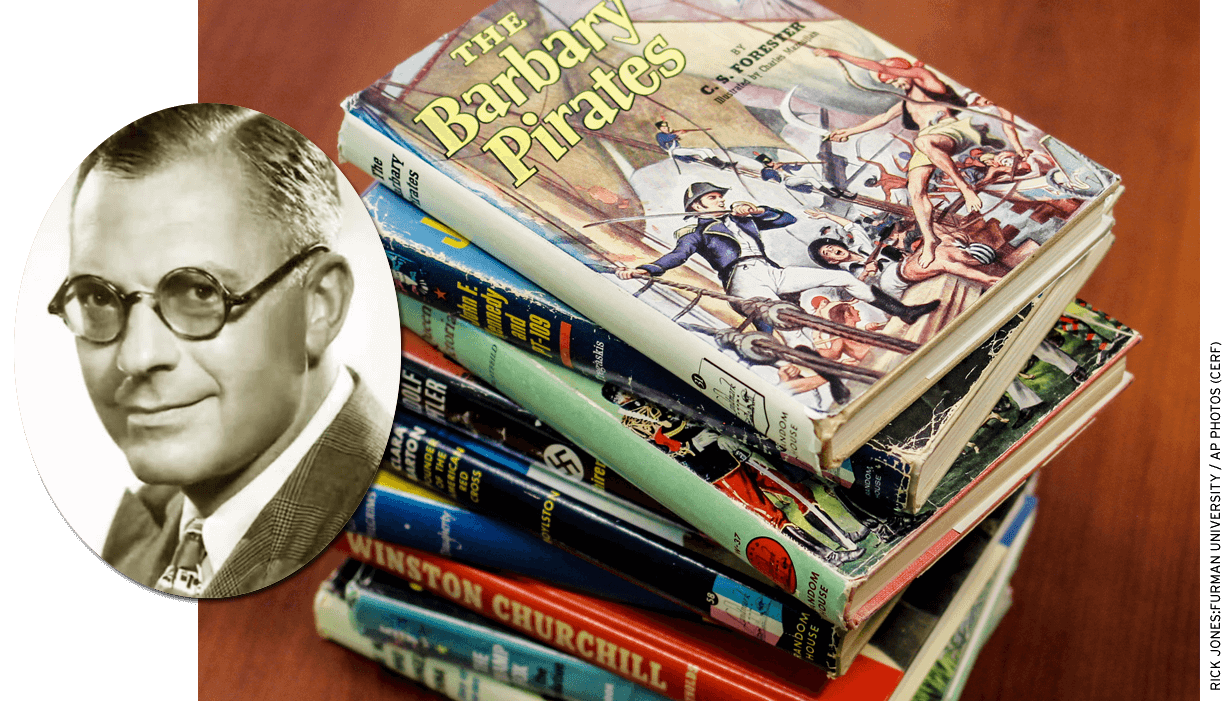
And then I discovered old copies of American Heritage magazine going back to the early 1960’s. Once a minor publication by the American Association for State and Local History, it was relaunched in 1954 as a handsome, 120-page hardcover magazine. The October 1961 issue was fairly typical. At the top of the masthead stood editorial director Joseph J. Thorndike, who after a stint at Time had been recruited to be the managing editor of Life. The senior editor was Bruce Catton, the prolific popular historian of the Civil War; the managing editor was Eric Larrabee, who later wrote one of the most thorough and accessible studies of Franklin Roosevelt as commander in chief. Assistant and associate editors included Richard Ketchum and Stephen Sears, excellent historians of the American Revolution and the Civil War. Authors in that issue included Hugh MacLennan, a prize-winning professor of English at McGill University writing about Canadian voyageurs; Mark Schorer, a University of California, Berkeley professor and biographer of Sinclair Lewis on the writing of Main Street; and John Lukacs, one of the most original historians of twentieth-century Europe writing about George Bancroft, one of the fathers of American history. It wasn’t fluff.
There was a progression here for a young person fascinated by the past and able to engage it at a number of levels, one which unquestionably played a role in shaping my attitudes, and not only mine, to politics. These were works of patriotic history, celebrating the American past and American heroes. They did not, nor did they need to, gloss over the stains and horrors. The heroes could be southern senators standing up to the Ku Klux Klan in the 1920’s or Chief Joseph leading his small tribe in a fight against the United States Army in the 1870s. And the tales could include accounts of political corruption, ambiguous loyalties, and mayhem—patriotic history does not have to conceal any of that, nor need it ignore the ambiguities of the past. But the key was that this was my history, to own and to celebrate, even though my grandparents were immigrants.
A shared story
Particularly for Americans, patriotic history is a kind of glue for an extraordinarily diverse republic. Lincoln used a patriotic version of the nation’s revolutionary past and founding generation to hold the Union together and provide meaning and redemptive hope after the slaughter of hundreds of thousands during the Civil War. The Gettysburg Address, after all, begins by recalling the Declaration of Independence and defining the meaning of the Revolution. And Lincoln in turn became a figure to inspire succeeding generations.
Yet patriotic history is more suspect these days than it was when I was its young student, 50 years ago. In 2014, Kenneth Pomeranz, completing his term as leader of the American Historical Association, chose as the topic of his presidential address, “Histories for a Less National Age.” While grudgingly conceding that nations or states remain important because they have armies, and acknowledging that historians might do some limited good by teaching about the United States, he generally welcomed the shift to spatially and temporally broader history, sweeping across continents and centuries. It is striking that just as he gave that address the forces of nationalism—in Russia, China, western Europe, and most definitely the United States—gave a set of roars that indicated that they were very far from dead. It was an instructive error for an historian to make.
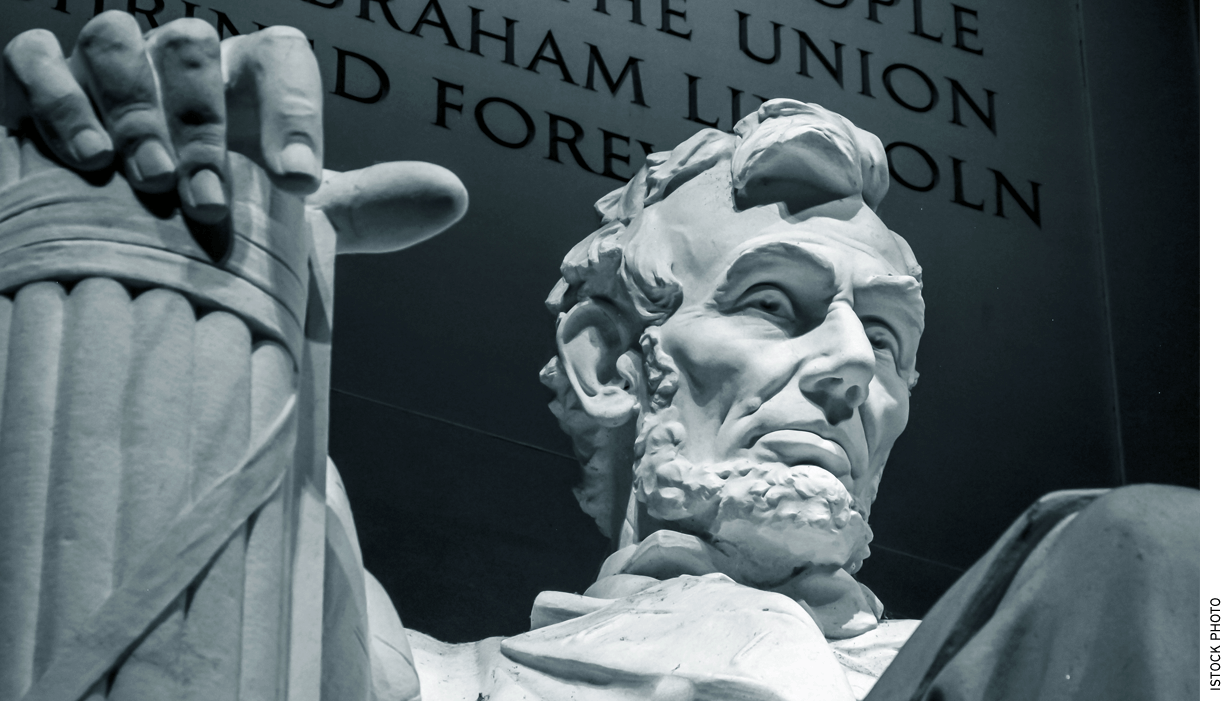
George Orwell famously observed in 1945 that nationalism is “the habit of assuming that human beings can be classified like insects,” whereas patriotism is “devotion to a particular place and a particular way of life, which one believes to be the best in the world.” In practice, however, modern academic historians, who are wary of nationalism for reasons good and bad, often conflate it with patriotism. And this is where some of the great divide between contemporary academic history and patriotic history has opened up. When the academy questions the very utility of national history, by necessity it undermines the possibility of patriotic history as well.
Civic education requires students engage with their history—not only to know whence conventions, principles, and laws have come, but also to develop an attachment to them. And civic education is also inextricably interwoven with patriotism, without which commitment to the values that make free government possible will not exist. Civic education depends not only on an understanding of fundamental processes and institutions (for example, why there is a Supreme Court, or why only Congress gets to raise taxes or declare war) but on a commitment to those processes and institutions, and on some kind of admiration for the country that created them and the men and women who have shaped and lived within them. In a crisis, it is not enough to know how the walls were constructed and the plumbing laid out in the house that Madison, Washington, and Lincoln built. One has to think that the architects did remarkable work, that as their legatees we need to preserve the building even if we modernize it, and that it is a precious edifice like none other.
The triangular relationship among civic education, historical knowledge, and patriotism seems in our day to be broken. Survey after survey delivers dismal verdicts about what Americans know about the government under which they live. For example, in a recent survey by the Annenberg Public Policy Center, just two out of five respondents could identify the three branches of government and one out of five could not identify any branch of government. Nearly half thought that illegal immigrants have no rights under the Constitution. Another survey indicated that only one third of Americans would pass a U.S. citizenship test.
The issue appears not to be a lack of civics courses per se, which are required in the vast majority of states. Rather, the issue seems to be the unmooring of civics from history, and in particular history in the curriculum at colleges and universities where the high school teachers of tomorrow are trained.
In a blistering article in the national security-oriented online publication, War on the Rocks, my colleagues at the Johns Hopkins School of Advanced International Studies Francis Gavin and Hal Brands declare that the historical profession is “committing slow-motion suicide.” Able historians themselves, they point to studies showing a decline of 30 percent in history majors at U.S. institutions of higher education in the last 10 years alone—the steepest enrollment slide of any of the humanities. The brunt of their critique is that the discipline of history has walked away from some of the subfields that matter most to the shaping of engaged citizens—politics, statecraft, and war. Meanwhile, fellow historians Fredrik Logevall and Kenneth Osgood have found similar patterns in hiring in the profession; in looking at H-Net, the leading website for academic jobs in history, they found a grand total of 15 advertisements in 10 years for tenure-track junior historians specializing in American political history.
Members of the historical profession might, with reason, push back on this bleak picture, noting the robust health of organizations like the Society for Military History. But the truth remains that traditional forms of history—political, diplomatic, and military—have been increasingly pushed to the margins of the field; that departments of history have shrunk rapidly because students vote with their feet; and that churning out fewer history majors (who in turn are likely to be the future history teachers in middle and high schools) bodes poorly for the future of civic education. If, moreover, those fewer students who remain are themselves only barely familiar with the kinds of history that appeal to young people and can form them as citizens, the cycle becomes a vicious one. If the nuts and bolts of American political and military history are not taught in universities, the chances that they will be passed to a younger generation yet diminishes.
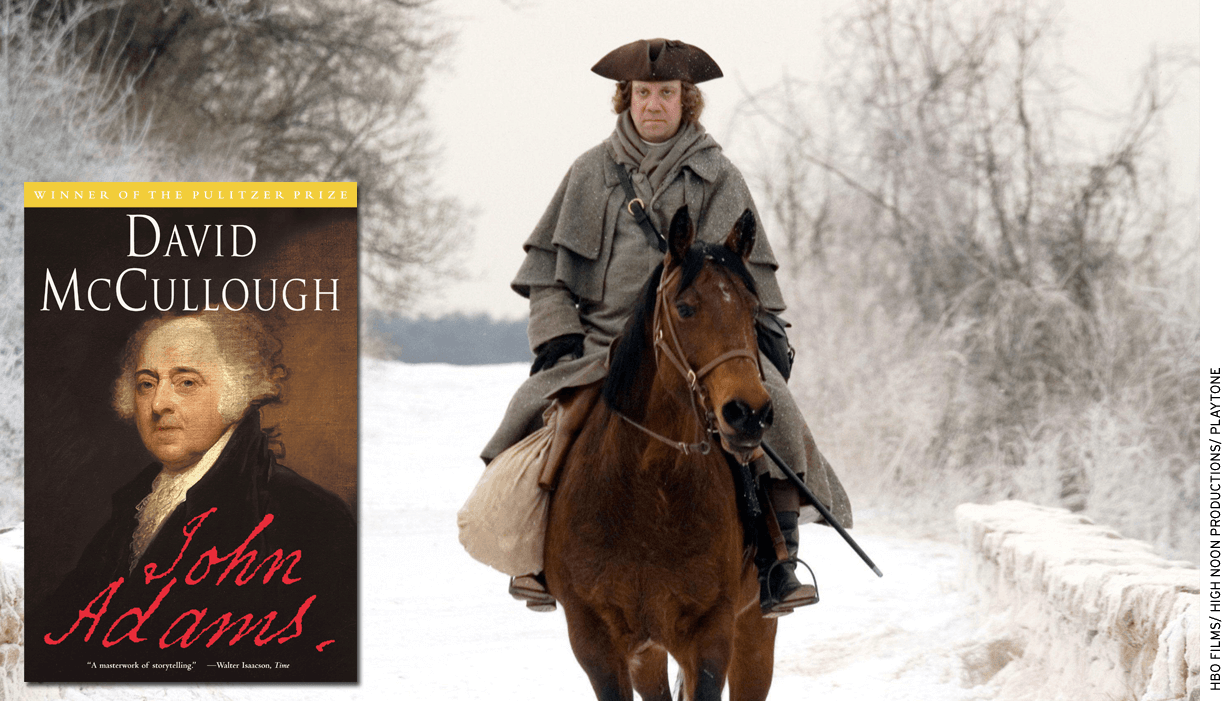
Beyond the academy
It is not the case that Americans in general have fallen out of love with their own past. Large numbers visit battlefields and museums—a million a year to Gettysburg, more than that many to Mount Vernon, almost three quarters of a million to the National World War II Museum, and six-digit numbers even to more remote sites. Popular historians do well—David McCullough and Ron Chernow have repeatedly written best-selling historical biographies. On the whole, historical television series may not quite draw the 14 million viewers that Ken Burns’ 1990 Civil Wars series did, but they have done respectably enough. John Adams, for example, attracted something like 2.5 million viewers.
The problem lies not in lack of interest, but in a tension between the academic historical community and both the reading public and popular writers. It is not enough to have best-selling books or television series about the American past, though those are welcome: there is a need for a general awareness of that past that has to be spread indirectly through college and university education and thence to middle and high schools. And while the history of the academy has to be somewhat different than the history of Netflix or the airport bookstand, they cannot be too far apart.
That gap has not always existed. It was possible, for example, for Allan Nevins, an enormously prolific writer about the Civil War and a biographer of Charles Fremont, John D. Rockefeller, and Henry Ford, to be a tenured professor at Columbia and president of the American Historical Association—without a doctorate degree in history. That would be unthinkable today. Yet a contemporary of Nevins who did have a doctorate, Harvard University’s Samuel Eliot Morison, was similarly popular, similarly prolific, and similarly influential.
The Morisons and Nevins of the previous century believed that they had a duty to illuminate the American past for their fellow citizens. They could be nuanced and critical while respecting the patriotic uses of history.
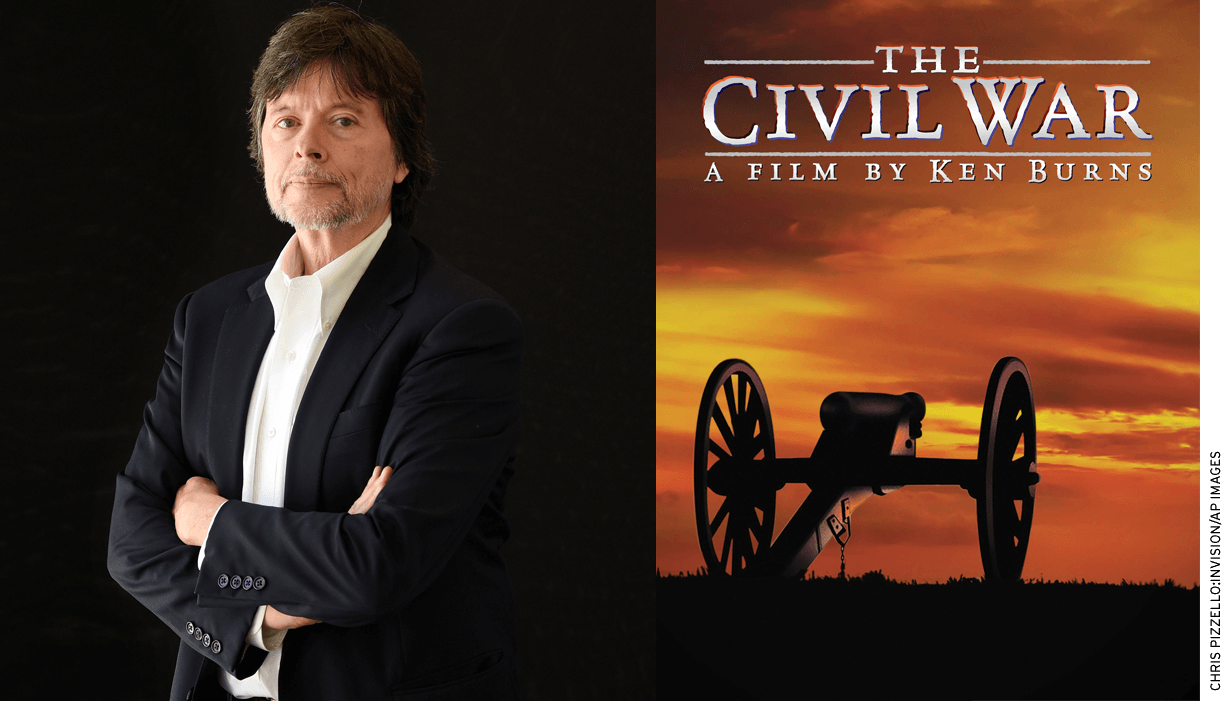
In current times, the weight in the academic historical profession has been, for some time, hostile to that and to anything that smacked of such an approach, making the case against such story telling with a purpose. In a critical review of David McCullough’s biography of John Adams, historian Sean Wilentz of Princeton University lashed not only the author but what he described as the American Heritage style, “brilliant in its detail, evocative in its storytelling, but crushingly sentimental and vacuous,” which he believed had infected Ken Burns’ Civil War docu-series as well. Wilentz celebrated as an alternative Bernard DeVoto, a once well-known popular historian whose work painted a critical, fuller picture of the past and remains well worth reading.
These wars have continued. When in 2011 Harvard historian Jill Lepore published a book on the original Tea Party and its resonance today, she was taken to task by the dean of early American historians, Gordon S. Wood. “Americans seem to have a special need for these authentic historical figures in the here and now. It is very easy for academic historians to mock this special need, and Harvard historian Jill Lepore, as a staff writer for The New Yorker, is an expert at mocking,” Wood deplored this disposition.
After criticizing Lepore for her contemptuous tone toward a political movement that she despised (the Tea Party), Wood argued that societies need memory and a useful and a purposeful past—in other words, heritage. Modern critical historical writing, he said, seeks simply to establish what happened. It is “all head and no heart,” Wood wrote, and citing his own teacher, Bernard Bailyn, argued that it was important to understand that such history could not meet a society’s needs, and something else is required.
This is the nub of the matter. Even if the academy generated more historians (like Wood, Wilentz, and Lepore, for example) who can write compellingly and lucidly for lay audiences, and even if they turned their attention to politics of the kind that citizens need and average readers find interesting, there is bound to be a tension between the outlook of the modern analytic historian and that of the patriotic historian.
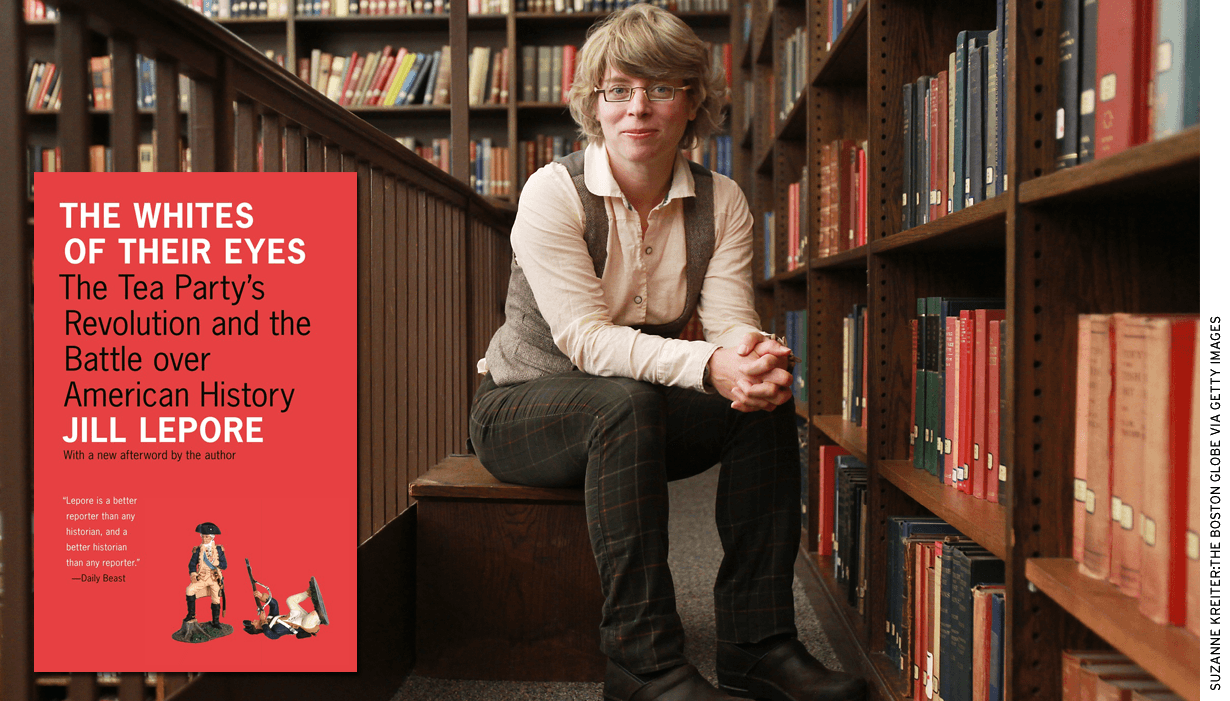
Searching for inspiration
Patriotic history involves, for example, heroes. Most academic historians who write biography (not the most popular genre in universities) specialize in the study of clay feet. Hence David Herbert Donald’s biography of Lincoln depicts a president stumbling from decision to decision and yet somehow presiding over a triumphant Union. Doris Kearns Goodwin—a popular historian—gives a much more sympathetic account in Team of Rivals. Perhaps because she had had closer connections to the world of actual politics, her book is the more popular, and more admiring, one. One may even think it is in some ways the more essentially accurate portrait.
Americans need history that educates and informs, but also one that inspires. If, for example, one gives equal weight to John F. Kennedy’s sordid sexual behavior and the soaring rhetoric of his inaugural speech; if one concentrates as much on the personal peccadilloes, inconsistencies, and mixed motives of the Founders as on the marvel that is the Constitution that they created; if the shameful relocation of American citizens of Japanese ancestry to concentration camps gets more play than the D-Day landings or Battle of Midway, history cannot serve that inspirational function. And then, in a crisis, you are stuck, because you have no great figures to remember, no memory of great challenges overcome, no examples of persistence and struggle to embrace.
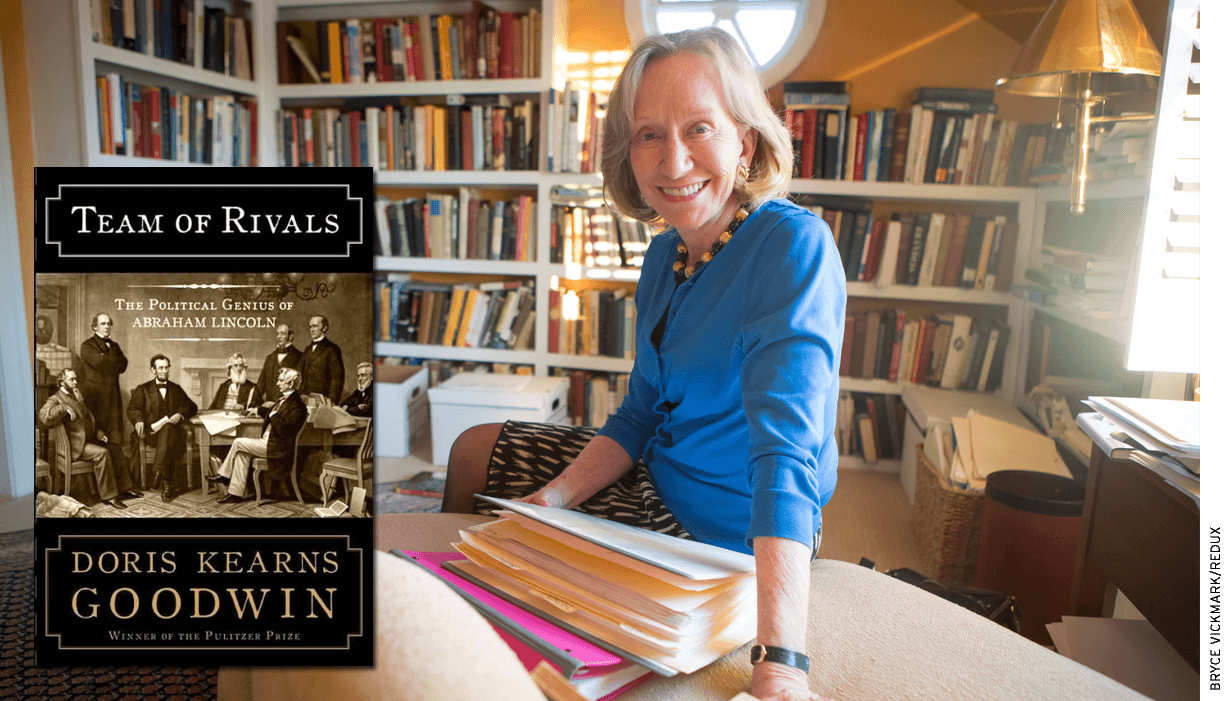
A notable recent work of scholarship, Richard White’s account of Reconstruction and the Gilded Age, The Republic for Which it Stands, is something of a warning. It is a volume in the excellent series produced by the Oxford History of the United States, which also includes James McPherson’s Battle Cry of Freedom (on the Civil War) and Wood’s Empire of Liberty (on the early republic). Like the other volumes, it is lucid and masterly in its scholarship. But its relentless depiction of an irredeemably sordid past, blotted by the oppression of the African American population of the South, massacre of Indians, despoiling of the environment, horrors of tenement life, and political cupidity, leaves the reader thinking that perhaps the only good thing to be said about the United States during this period is that by contrast, it makes today’s America look good. One could write a history that acknowledges all those things—yet somehow also celebrates the great works of literature and engineering from Mark Twain to the Brooklyn Bridge, or the extraordinary political achievement of the reunification of a country that had experienced four years of unremitting bloodshed, or the heroism (quiet in one case, noisy in the other) of Booker T. Washington and a young Theodore Roosevelt.
Wood recognized in his review of Lepore’s book about the Tea Party that the two forms of history—critical and patriotic—can only coexist, but rarely if ever coincide. Some particularly gifted historians can pull it off, such as David Hackett Fischer, in his magnificent books Paul Revere’s Ride and Washington’s Crossing. But for the most part, the two forms of history have different purposes and tap different skills and sensibilities. The challenge is the management of their coexistence, and in particular the recognition by scholars that both are necessary.
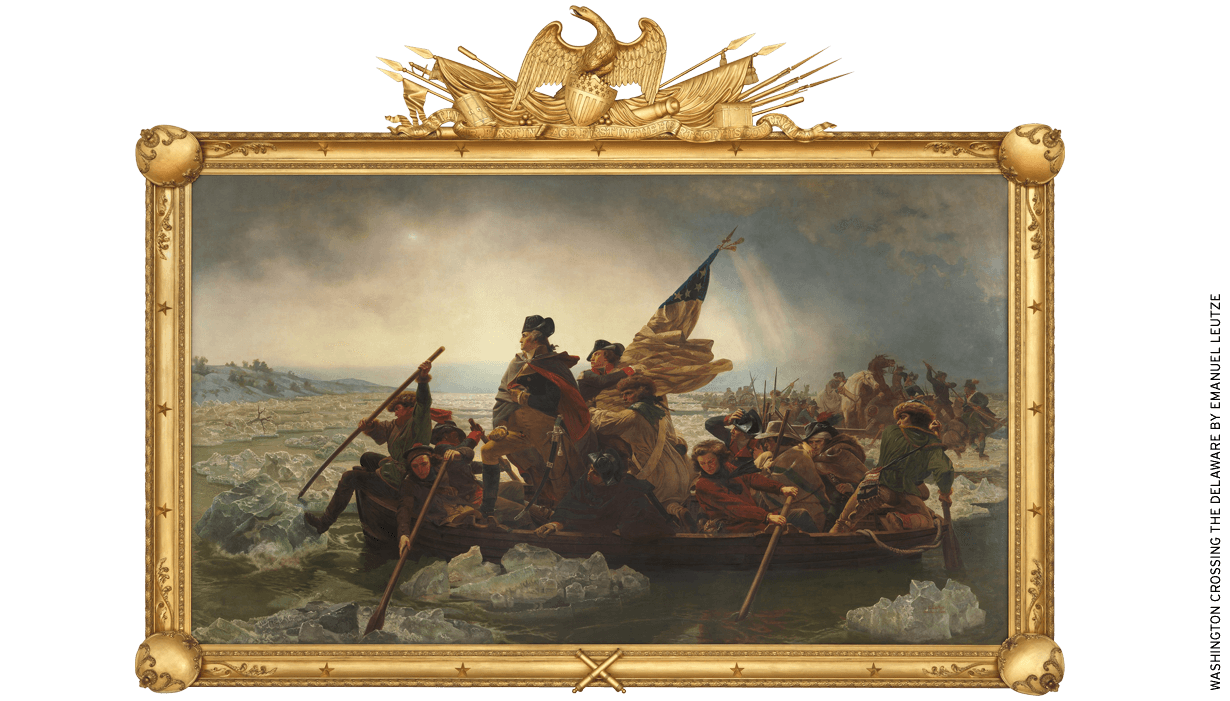
Popular and patriotic historians may grumble at reviews of their work by their academic colleagues but in truth, pay them little heed. For academic historians, however, the sentiments can be more acidic. Jonathan Zimmerman, a professor at the University of Pennsylvania, put it sharply in a guarded defense of Ken Burns: “It’s called sour grapes. Put simply, Burns has managed to engage a huge public audience. And that makes him suspect among members of our guild, who write almost entirely for each other. We pretend we don’t envy his fame and fortune, but of course we do. We’re like high-school kids who don’t get asked to the prom, then say they never wanted to go in the first place.”
Zimmerman had begun his career as a high-school social studies teacher, closer to the real needs of the American public for historical education. He noted that writing for lay audiences often counts against a young historian and deplored the guild mentality of a history profession that too often looks down on public engagement. In so doing, he made a point that cannot be put too forcefully. Unless history departments, and university administrators behind them, begin to weight public engagement as a useful academic function, they are likely to pull their discipline further into bitter irrelevance.
A reversal of this trend is not inconceivable, particularly for those faculty members who have tenure, but also have to deal with tight-fisted college administrations in an era when higher education itself is being turned upside down, and when it is becoming harder to sustain departments that do not pay their way with student seats in classrooms. History departments’ disdain over the last few decades for both popular history and the historians who engage the American public may not survive provosts unwilling to hire more expensive professors teaching fewer courses to fewer students.
Moreover, the educational establishment itself has, on occasion, changed its approach to history. After a series of critiques, the College Board revised its course framework for Advanced Placement History. “AP United States History,” in its 2017 version, is both sophisticated and sober, but offers plenty of opportunities to explore learning objectives like “explain how ideas about democracy, freedom, and individualism found expression in the development of cultural values, political institutions, and American identity.”
And then there is politics itself. In 2016, the political tide turned. Instead of a desperately unhappy conservative opposition to a liberal president turning to history for inspiration and consolation and meeting the scorn of liberal history professors, it was the liberals who found themselves looking for a usable past. They saw a president they believed to be a potential tyrant, and a Republican party that seemed to be mastering the legislative and judicial branches of government. They now needed the heroes and the inspiring moments from the past to convince themselves that the country could get through difficult times.
Interestingly enough, it was Jill Lepore who found herself doing in a different way what she had disparaged the Tea Party movement doing. In 2018 she published an ambitious and engrossing one-volume history of the United States, These Truths. It is filled with patriotic sentiment. “The United States rests on a dedication to equality, which is chiefly a moral idea, rooted in Christianity, but it rests too, on a dedication to inquiry, fearless and unflinching,” she writes. The book concludes with the old metaphors of the ship of state in a storm, with Americans called upon to fell majestic pines and “hew timbers of cedar and oak into planks” to rebuild the ship. Depending on one’s literary tastes, the language is either florid or evocative, but it was clear that in the profound crisis Lepore saw in the Trump presidency, history had to come to the rescue. Possibly without recognizing it, she too had become a patriotic historian.
History’s road ahead
What, then is to be done?
We can begin by recognizing that although America’s renewed focus on STEM (Science, Technology, Engineering, and Mathematics) education for K-12 has had some beneficial effects, it is vital to pay heed to supposedly softer subjects—history foremost among them. Evidence suggests that recent focus on STEM as well as on standardized tests in reading and math (and therefore preparing for tests) has come at the expense of civics, social studies, and history. Educational reformers should realize that the time may have come to rein in the obsession with formal testing and to restore some balance to curricula.
While little can be done in the short run about what has happened to history as a discipline, or how history teachers are trained in universities, there is a lot that can be done in summer workshops or through creative forms of part-time education, particularly online. If many conventional universities do not offer adequate instruction in history for teachers, entrepreneurially minded competitors can do so, and with national reach by virtue of online education. All of these are opportunities for creative grant giving and philanthropy.
The federal government’s role is one to be approached with care. Part of the strength of the traditional American educational system has been that it has been decentralized and competitive, and one can argue that attempts to create standardized tests and standards do as much damage as good. Moreover, particularly in the field of history, the temptations for ideological fiddling are too great to make conservatives, in particular, feel comfortable. But there are two areas in which there is good to be done.
The first is through the National Endowment for the Humanities, which has sponsored historical work to include workshops for teachers as well as original productions of videos and the like. The second, and even more important, is the role of the Federal government in properly funding and sustaining national historic sites to include battlefields, monuments, and historical homes, but also the Library of Congress and National Archives with their magnificent collections of historical documents. These offer many opportunities for the millions of Americans who are interested in engaging their past to do so.
There is also a role for entrepreneurship and philanthropy to play. For example, organizations can support bringing back some of the older material discussed at the beginning of this paper and creating new sources of such work. Further, they might expand opportunities for students to learn history through experiences outside of the classroom. While patriotic history may be imbibed inside a school, it can also be found by singing along to the Hamilton score (see “Hamilton Goes to High School,” features, Summer 2017), while camping on the Lewis and Clark trail, watching Ken Burns’ The Civil War, or even by finding ways to get into the hands of a curious 12-year-old a novel that she or he will never forget. Any good teacher, at any level, knows that the key to success lies in multiple ways in to a young person’s consciousness. “Material things, things that move, living things, human actions and account of human action, will win the attention better than anything that is more abstract,” William James wrote in Talks to Teachers.
There is no more natural subject of fascination than history, particularly the history of one’s own country, and particularly if that country is the United States. The decline of patriotic history is a severe problem for civic education—but fortunately, there are many ways of mitigating and even reversing it.
Patriotic history is a sensitive topic. It can take false and even dangerous forms. The Lost Cause narrative of the Civil War, for example, masked the reality of slavery as the central cause of the bloodiest conflict in American history. But if done well, as many historians, museum designers, and custodians of national parks, public, semi-public, and private institutions have shown, it can both educate and inspire. And it is, in any case, inescapable. Without civics, our political institutions are reduced to valueless mechanisms. Without history, there is no civic education, and without civic education there are no citizens. Without citizens, there is no free republic. The stakes, in other words, could not be higher.
Eliot Cohen is the Dean of Johns Hopkins University’s School of Advanced International Studies. This essay is adapted from the forthcoming book, How to Educate an American, published by Templeton Press.
This article appeared in the Spring 2020 issue of Education Next. Suggested citation format:
Cohen, E.A. (2020). History, Critical and Patriotic: Americans need a history that educates but also inspires. Education Next, 20(2), 8-17.


